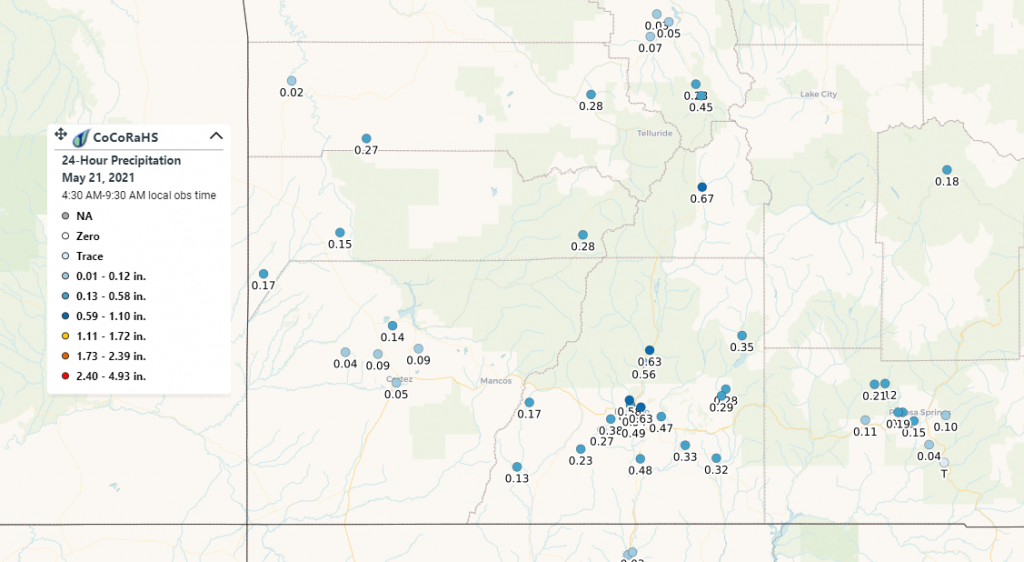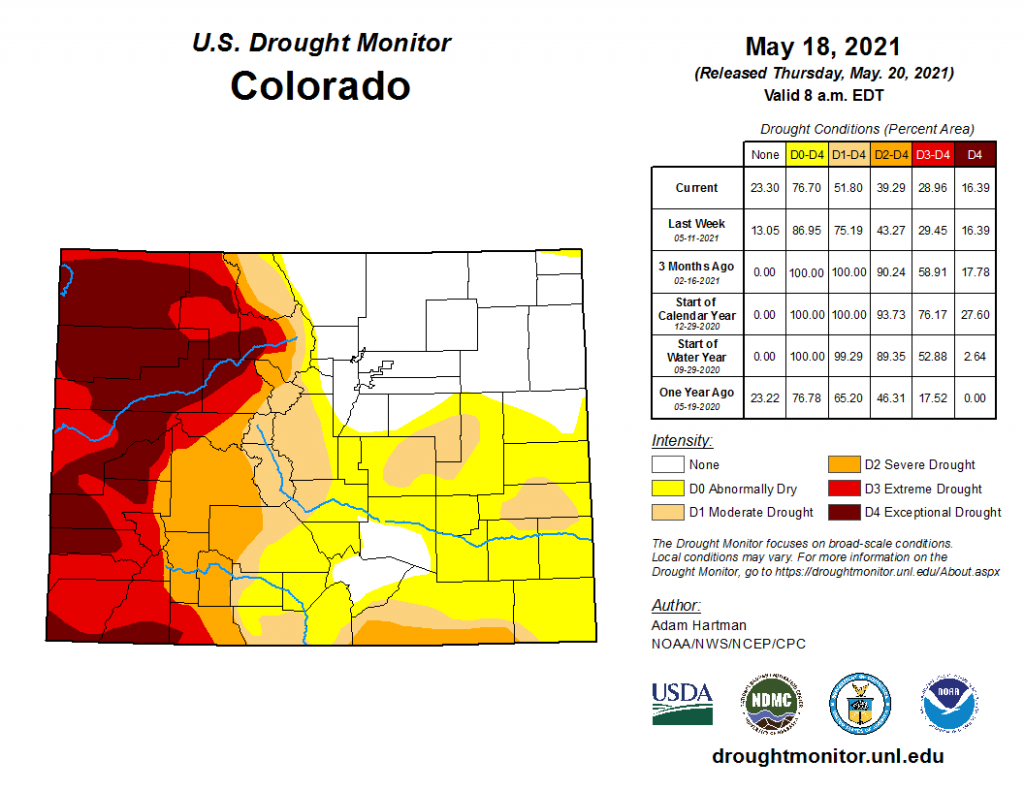Issue Date: Sunday, May 23, 2021
Issue Time: 10:00 am MDT
Summary
Yesterday was very active for weather across the state. Much of the Front Range and Central Mountains received measurable precipitation, as well as the Eastern Plains and Raton Ridge. Severe thunderstorm, tornado, and flash flood warnings issued by the NWS were scattered across the entire eastern half of the state. Eight tornado reports were made to the Storm Prediction Center, as well as 1.0-1.5 inch hail reports.
CoCoRaHS observers from Grand Junction to Julesburg recorded some precipitation yesterday. The highest observation in the state was from Trinidad in southern Colorado, where 3.13 inches was recorded in 24-hours and a flash flood warning was issued. Here is what that particular observer had to say about the storms yesterday:
“It’s hard to believe, but it’s true. I corroborated this account with measurements of five-gallon buckets left outside. There was severe flooding of ephemeral stream beds. 10 stone check dams were destroyed and heavy stones were tossed down the creek. Even cinder block dams were tossed aside. Erosion is heavy with exposed roots everywhere. New tree starts were swept away. I wanted rain… but not like this.”
3.13 inches in a 24-hour period relates to an approximately 16-year average recurrence interval, or less than 6% chance of occurring in each year, according to precipitation frequency estimates from NOAA Atlas 14. However, the average recurrence interval is probably higher, since the duration of the precipitation was more likely 12-18 hours starting around noon and ending overnight.
For additional rainfall estimates in your area, check out our State Precipitation Map below.
Click Here For Map Overview





